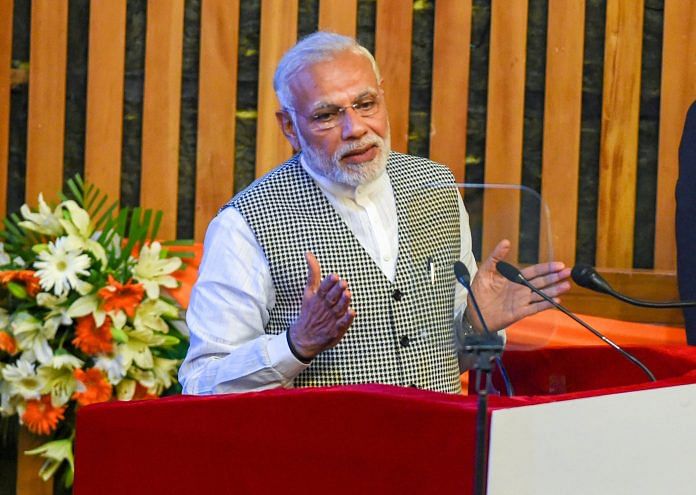The NDA government will carry out the seventh economic census, which will form the backbone of a national business register platform.
New Delhi: The Narendra Modi government is set to launch a census to survey the country’s job scenario — a topic of heated debate in the run-up to the 2019 Lok Sabha polls — and build a bank of employment data.
According to highly placed sources in the ministry of statistics and planning implementation (MoSPI), the government will launch the seventh economic census during 2019-20, which will form the basis for a national business register platform (NBRP).
The last such stock-taking exercise was carried out two years back.
The Modi government has been accused by opposition parties of failing to fulfill its promise of creating one crore new jobs a year to cater to the surging population of young job-seekers.
Top ministers and government officials have, however, sought to defend themselves by saying India does not have a definitive repository of jobs data. Unemployment is expected to be a major issue as the Modi government seeks re-election next year.
The NBRP is expected to fill the void created by the absence of reliable data to track the job market.
“It will facilitate the creation of a repository of information on economic activity from the formal and informal sectors on various socio-economic parameters, including employment,” said a senior official at MoSPI.
The platform will collate data on establishments from the Goods and Services Tax network, Employees’ State Insurance, Employees’ Provident Fund Organisation, and other registration authorities.
For employment data, the ministry has also proposed to tap other sources like the Mahatma Gandhi National Rural Employment Guarantee Act (MGNREGA) and the Mudra scheme, which funds MSME enterprises, especially for the informal sector.
On-the-ground surveys, to be conducted via geo-tagging of commercial establishments and shops, are also on the cards.
“This would help us take a count of the number of people employed, irrespective of the kind of work the establishment does. For instance, last year, an establishment was a tailor shop with seven employees but now it is a beauty salon with 15 employees,” another source at the ministry explained.
Missing job data since 2016
The Labour Bureau, which falls under MoSPI, has not conducted any survey to find out actual employment data since 2016, a fact confirmed by labour and employment minister Santosh Kumar Gangwar in Parliament.
According to the 2016 Labour Bureau report, the unemployment rate in India shot up to a five-year high of five per cent in 2015-16 — 8.7 per cent for women, and 4.3 per cent for men.
In the rural sector, the rate stood at 5.1 per cent, while it was 4.9 per cent in the urban sector, according to the usual principal status (UPS) approach (survey conducted on the basis of a person’s activity status during the 365 days preceding the date of survey).
After the release of the data, the Modi government drew severe criticism as it had come to power on the back of a promise to create one crore jobs every year. The government did not carry out the annual employment-unemployment survey thereafter.
A void India ‘cannot afford’
Economists believe that not having data on the job market makes policy implementation difficult.
“In a country driven by the youth population, absence of data on employment could be misleading. It means we are unable to monitor the economy and take appropriate decisions,” said D.K. Joshi, chief economist at Crisil.
“The government needs to have a national data bank on the job market, which could be released annually,” Joshi said.
“An economy like India cannot afford to remain clueless about the employment situation of the country when it dreams to take on the leadership role in Asia’s economic landscape,” said economist Pronab Sen, India’s first chief statistician.






